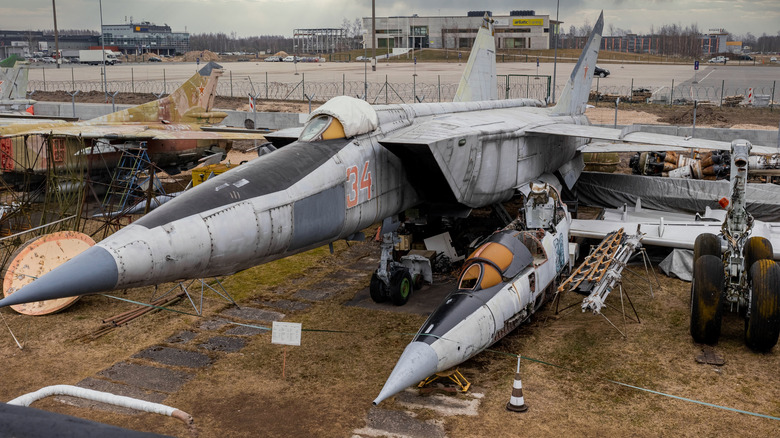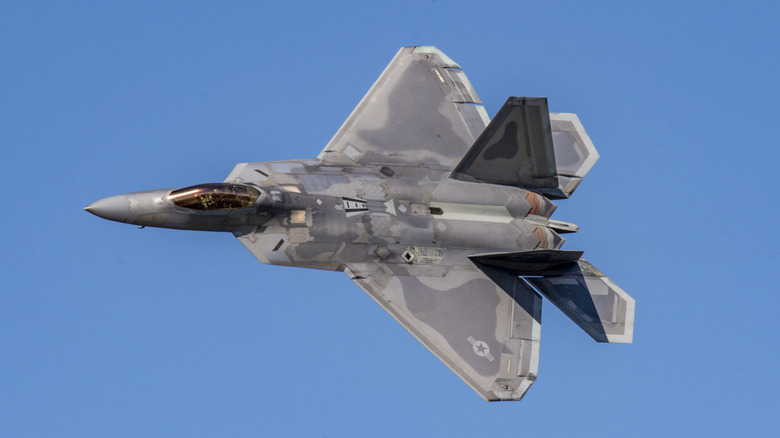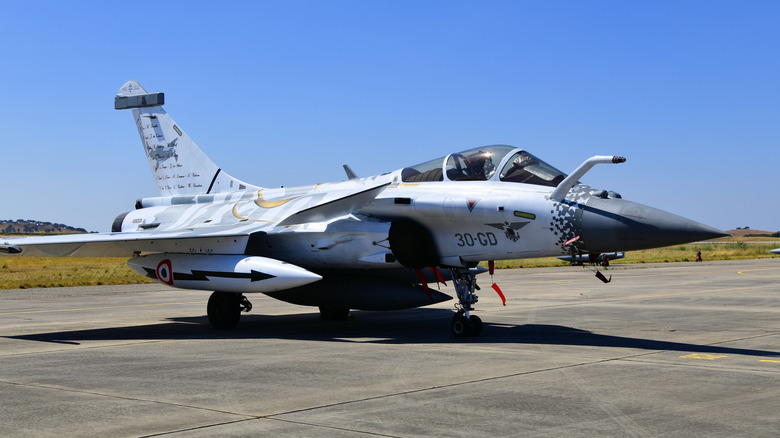What Is Supercruise In Fighter Jets And How Does It Differ From Afterburners?
Supersonic flight has historically been very fuel-intensive, one reason why the costly Concorde proved impractical to run, and this has made it more expensive. Two ways fighter jets maintain such flight are through afterburners and supercruise. An afterburner is, essentially, a sort of turbo boost the pilot can activate to coax every drop of speed out of their jet. The afterburner introduces extra fuel into the exhaust stream and ignites it, dramatically increasing the aircraft's thrust. It's an additional engine component, albeit a simple one in design.
One vital aspect is the nozzle, which allows the pilot to activate or deactivate it at will. It also features a chamber for igniting the fuel and, of course, a fuel injection system. It's a fast and effective way of hitting or increasing supersonic speed, but very wasteful in terms of fuel use. An aircraft capable of supersonic flight using afterburners certainly won't push to maintain it through the full course of a flight, because it burns a lot of fuel and does so in a very inefficient manner. As such, afterburners are generally used for very brief periods when they're strictly necessary.
The primary function of a fighter jet's afterburners is for a short, sharp injection of additional power. It's a feature to be used sparingly, such as during takeoff, and may make the difference between victory or failure in a mission, potentially even save a pilot's life by offering additional maneuverability at a critical moment. Supercruise, meanwhile, involves 'cruising' at supersonic speeds, hitting the sound barrier without using afterburners. This is not limited to a quick burst of speed, but means that an aircraft can continue flying at supersonic speeds for longer.
Military aircraft that are capable of supercruise
An important thing to note about supercruising is that there are distinctions to be made. An aircraft may be able to attain supersonic speeds without afterburner use in the most optimal conditions, but not in its typical configuration for flying. This is one thing that's so remarkable about the F-22 Raptor. In July 1999, Combined Test Force Commander Colonel C.D. Moore boasted that the Raptor, then a brand-new production aircraft, had a completely unique capacity.
Air Force News quotes Colonel Moore as saying, "Yesterday the airplane demonstrated that it can achieve awesome speed, flying above 1.5 Mach at a low power setting, for a sustained period of time. No other fighter in the world can do that." This, then, is the essence of supercruising: Not just reaching such speeds without afterburners, but doing so and remaining at such speeds, without pushing power levels. There are very few jets in active service today that can supercruise, but those able to can derive tremendous benefits. Operating effectiveness increases, as does the aircraft's range.
Most supersonic aircraft require a significant boost from afterburners to break the sound barrier. This goes for most military aircraft as well as those few civilian ones capable of doing so, such as the Concorde. Not only could that unique civilian aircraft cruise at approximately Mach 2, but it also had afterburners. As was the case with military aircraft, they were frequently used during takeoff, as they're a fantastic way to get a great blast of acceleration as well as speed. This is true for most supersonic aircraft, because supercruise and afterburners aren't mutually exclusive factors.
Supercruise and afterburners in the same aircraft
Afterburners may make the difference between victory or failure in a mission, potentially even save a pilot's life. Supercruising doesn't preclude a fighter jet from also using its afterburners to boost its thrust and speed even further. One case in point is the Dassault Rafale, a European jet developed by Dassault Aviation. It was created for what Dassault calls "Omnirole" functionality and achieves this through versatility in equipment and configuration.
The Rafale-B variant, for instance, is a two-seater that opens up the possibility of training pilots in its operation. To further boost its versatility, its supercruise functionality is bolstered by optional afterburners. Its M88-2 engine, the manufacturer goes on to boast, offers 10,971 pounds of thrust dry (without afterburners active) and up to 16,620 pounds of thrust with them blasting away (or 'wet'). This translates to speeds of approximately Mach 1.4 in supercruise and Mach 1.8 with afterburners.
The nature of fighter jets' missions, however, can often be unpredictable and changing, not to mention risky. Afterburners are a reassuring feature for such a jet to be equipped with in such cases. Its use, however, has considerable downsides, and so they're not to be activated lightly. As we've seen, it's very unusual for an aircraft to have the capacity to hit supersonic speeds without going full-force with afterburners. Both the advantages and the cons of using such systems, however, are clear to see. A boost of potentially more than 50% to thrust output is very significant, but so is the associated leap in fuel expenditure. This is why the afterburning turbofan engine of the F-22 Raptor is so remarkable.


